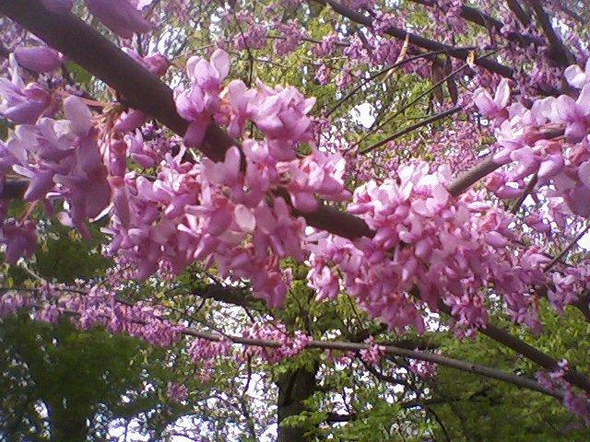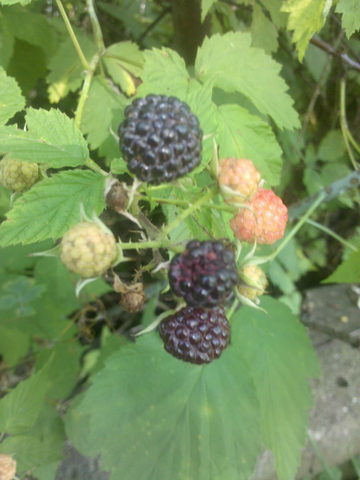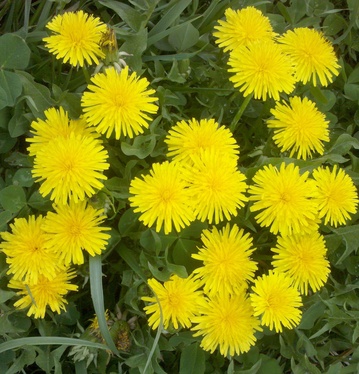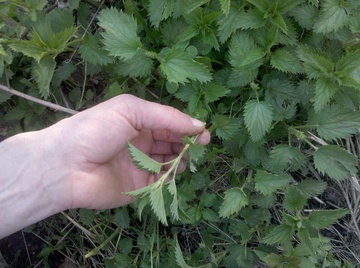Wildcrafting: Favorite foraging finds - two top 10 lists

The Redbud is on my foraging friend's top 10 list. It will be back in the spring.
Linda Diane Feldt | Contributor
I asked my foraging friend to list his ten favorite foraged finds. Here is his list:
Black raspberries (Rubus occidentalis)

Black raspberries are a treat in May and June. Or frozen, you can enjoy them all winter.
Linda Diane Feldt | Contributor
Autumn olive (Elaeagnus umbellata)
Violets (Viola) - flowers
Mint (Mentha) (many different kinds)
My own list would be similar, but a little more medicinal.
Choosing the plants that make me cheer out loud:
I would echo Gary with these:
Black raspberry
Lambs quarters
Wild onion/garlic/chive
Wild strawberry
and add:

All parts of the dandelion are edible, the leaves are especially nutritious.
Linda Diane Feldt | Contributor
Dandelion (Taraxacum officinale)
Cattail (Typha latifolia)(esp. the root)
St. Johns Wort (Hypericum perforatum)

Nettles are spring treat, tasting like wonderful spinach. They also support kidney health.
Linda Diane Feldt | Contributor
Linda Diane Feldt is local holistic health practitioner, teacher, and writer. You can follow her on twitter, visit her website, or reach her directly at ldfeldt(at)holisticwisdom.org. For almost two decades, The People’s Food Co-op has sponsored a free monthly workshop taught by Linda Diane. The next class is January 27, 7-8:30, at Crazy Wisdom Bookstore and Tearoom. The topic: Ritual Use of Herbs. “With an emphasis on creating harmony and balance, we will explore the historical use as well as practical, more modern, uses of both local and exotic herbs and other plants.” Register on line or call (734) 994-4589.


Comments
Linda Diane Feldt
Thu, Jan 6, 2011 : 8:13 a.m.
Ground cherries - if you mean these http://www.annarbor.com/entertainment/food-drink/wildcrafting-ground-cherries-are-ripe-now/ they are safe to eat WHEN RIPE. So wait until they turn from green to yellow or reddish brown. Late in the season. Wild ginger is in rich, loamy forests mostly. I imagine it would be easy to grow. I've wild harvested small quantities, it makes a nice tea when backpacking for example. The commercially is actually a different species, and seems to have more medicinal value. The lovely local wild ginger we have has not been studied much, to my knowledge. The UM Arb has lots of it, right off the main path from Geddes to the river, great for viewing and ID but of course you can't dig up anything growing in that protected space.
Rork Kuick
Wed, Jan 5, 2011 : 9:19 a.m.
You could grow wild ginger (Asarum canadense) yourself. Plants are for sale, mostly Apr-may when it flowers. Resist damaging the wild plants, please, since they don't come by hundreds, and are really cool.
Flossie
Tue, Jan 4, 2011 : 9:38 p.m.
Are the Ground Cherries that grow around here ok to eat? So many around! But what I can't find is wild ginger - any hints?
Linda Diane Feldt
Mon, Jan 3, 2011 : 2:04 p.m.
Indeed, mushrooms could be on these lists. I have specifically chosen not to teach or write about mushrooms though. Why? Because so much more caution and clarity is needed. The statement here, that nothing looks like them is a great example. The false morel is not deadly poisonous, but it can make some people sick. I've talked to people who have eaten them, they had different reactions. A little misinformation with mushrooms can do a lot of harm. So I keep that part of my foraging quiet. And only teach it in person to friends. I'm also not great at mushrooms, there are just three I am very confident with wildcrafting. Maybe four. And the truth is, my favorite wild edible or medicinal is whatever is currently ripe and available. And most mornings in the winter that is maple sap (I freeze gallons every winter) used to make oatmeal, and the frozen black raspberries I put into the oatmeal. I really ahve about 200 favorites. And find more each year!
abc
Mon, Jan 3, 2011 : 11:45 a.m.
"Nothing else really looks like morels, so don't worry!" Well, except maybe those 'False Morels' which are considered poisonous. Linda, Thanks for this and all of the links to specific information about each.
Rork Kuick
Mon, Jan 3, 2011 : 11:41 a.m.
Forage is a bit fuzzy, but I'd have added some other shrooms as well, like Chanterelles (Cantharellus cibarius) and Hydnum repandum (maybe "the hedgehog mushroom" some places). I'd have added blueberries and blackberries, which each exceed my strawberry take, by far. So as not to lie I will say nothing more. Black-raspberries in May - perhaps June-July was intended.
Pocket Beaver
Mon, Jan 3, 2011 : 10:50 a.m.
Morel mushrooms are number one on my list! Look for them in May. Around trees. Nothing else really looks like morels, so don't worry!